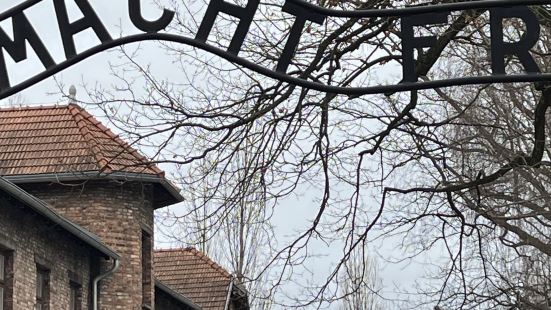
5/5
Seen a lot and learnt a lot about the history from the tour guide. It is really an experience seeing these remains in real life. Must go to really feel it for yourself if you’re in poland. mprawn
mprawn0
Auschwitz Concentration Camp is located in the city of Auschwitz, 54 kilometers west of Krakow. It was a concentration and extermination camp during World War II. At that time, the area controlled by the Auschwitz Concentration Camp Administration of Nazi Germany was 40 square kilometers. There were 3 main camps and 39 small camps in the concentration camp, which were distributed throughout the Silesia region of southern Poland. Concentration camp structure The concentration camp consists of Auschwitz I, Auschwitz II, Birkenau, and Auschwitz III, Monowitz. Jews, Gypsies, prisoners of war, intellectuals, members of resistance organizations, etc. from more than 30 countries including France, Austria and Hungary. About 90 percent of the victims were Jews from various European countries, and most of the victims died from gas chambers. Other deaths were due to hard labor, individual executions, and so-called "medical experiments." According to statistics, about 1.5 million people were killed here, so it is also known as the "death factory". Auschwitz concentration camp is a historical witness to the heinous crimes committed by Nazi Germany. Auschwitz 1 and 2 concentration camps are currently open to the public in the form of museums. From the service center, follow the signs and you will see the gates of the concentration camps. ”) slogan. On both sides of the road are neatly arranged zelkova trees, and in the middle is a prison cell made of red brick walls. The guided tour will help people to understand this heavy history more deeply and thoroughly. Security checks are required before entering the museum, and large luggage must be stored. Camp No. 1 Camp No. 1 is a concentration camp built relatively early, and it is also the main management and administrative center of the concentration camps in the entire Auschwitz area. There were 14 bungalows and 6 two-storey buildings at the initial stage of construction. In 1942, as many as 20,000 prisoners were registered here, and they were held in cramped cells, basements and attics. The relics of the victims are displayed in the indoor exhibition hall: about 100,000 shoes, 3,800 suitcases, thousands of pairs of glasses, real woolen fabrics made of human hair, etc. There are also harrowing archival photos taken of prisoners upon their arrival at the camp. The No. 1 gas chamber and incinerator are also located in Camp No. 1. Prisoners who were judged by the Nazis as "incapable of labor" would be transported here and tricked into the gas chamber in the name of "bathing". The inside of the gas chamber is not very large, and thousands of prisoners were held here, and the highly toxic hydrogen chloride gas is sprayed from the shower head. The surrounding walls had scratches on the nails left by the prisoners when they were dying, which was shocking. Building No. 11, known as the "Death Prison", has almost completely preserved its original appearance. Shown here are confinement cells, whipping rooms, gallows, standing cells, etc., where prisoners awaiting provisional sentence are held. The wall between Buildings 10 and 11 is known as the "Wall of Death", where prisoners are said to have been shot and killed. After visiting Camp No. 1, you can return to the exit and take a shuttle bus to No. 2 Birkenau Concentration Camp. The journey takes about 5 minutes. Camp 2 is mainly for outdoor walking tours. The road is paved with stones, which is not easy to walk. It is recommended to wear comfortable shoes when visiting. The second camp is very large, covering an area of 175 hectares. The Nazis built 300 wooden row houses. It was the main "extermination camp" during World War II. There are execution grounds and gas chambers here, and mass killings can be carried out. The gate of Camp II has appeared in many films such as "Schindler's List" and is known as the "Gate of Death". The railroad tracks on the ground passed through this heavy "door of death". At the end of the railroad tracks stood a huge monument, surrounded by four million stones, each of which symbolized an innocent sacrifice of the victims. The buildings of Camp No. 2 retain their original appearance and can be visited inside.